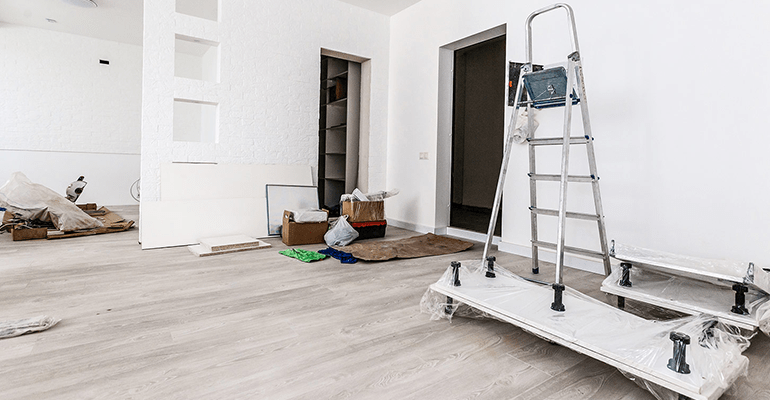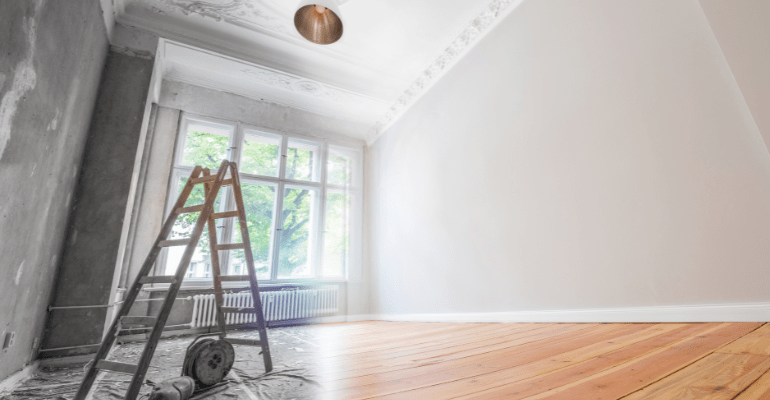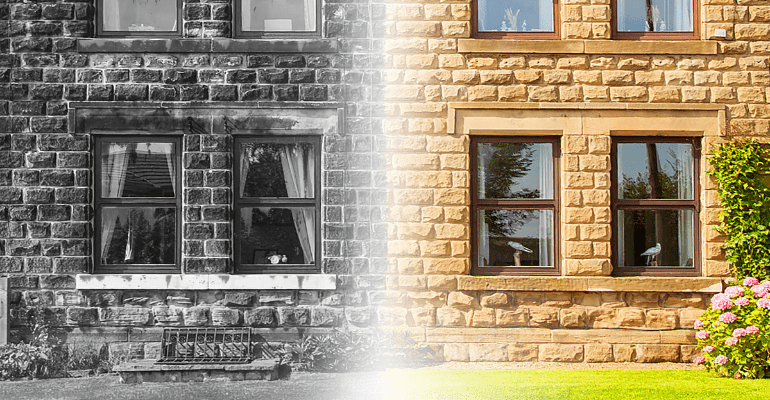
How to finance your flip.
If you’ve got grand designs of turning property into profit, buying and renovating pre-loved homes can be a ‘flipping’ great place to start.
Home renovation continues to be hugely popular in the UK, especially with TV shows like The Great House Giveaway and Homes Under the Hammer showing how ordinary people can buy up hidden property gems, polish them up and make amazing returns on investment. So, it’s hardly surprising that more people are packing in the 9 to 5 and turning to property renovation as a full-time career.
But, like the old adage says, it takes money to make money. That’s certainly true when it comes to home buying. If you’re tempted to flip a property, you’ll need to have your finances in place, with the ability to access funds at the right time.
Here’s our simple guide on how to finance each stage of your flipping journey:
Deposit
Let’s start with step one of any property buying process – getting your deposit together.
You’ll need to provide a percentage of the property’s value up front, with a larger deposit giving you more options when it comes to borrowing (for example, lenders will typically offer these customers better interest rates). Each lender will have a minimum deposit percentage that they’ll consider but, when buying to sell or rent out, this is usually 25%.
Now, that can still be a lot of money. And, it can be tricky to raise that much cash up front. If you don’t have savings to cover the deposit, and you’re fortunate enough to already have a foot (or two) on the property ladder, you can look to leverage any equity from other properties that you own, such as rental properties or your own home.
This is called a ‘second charge loan’ (or secured business loan), and it allows you to get a separate loan secured against a property with an existing ‘first charge’ mortgage. It has its own terms and rates that don’t affect the original mortgage. Plus, a second charge can be taken out over a much shorter period if you wish.
- Pro: You can get access to money that you’ve built up in other properties, generating a deposit to invest in your next property.
- Con: The existing property that you’ve taken out the second charge loan on could be repossessed if you don’t make your scheduled payments on both loans secured against it.

First time flipper? Why not read our guide to getting into property?
We’ll give you a heads up on what you need to know at each stage of the process, including:
- Building a business plan
- Figuring out your finances
- Recon and research
- Planning out your project
- Selling and repeating
Purchase
With your deposit sorted, you’ll now need to get the rest of the required cash to purchase the property. And, for this, you’ll need a lender and a finance product that meets your needs.
As the aim of your project is typically to buy, renovate and sell your new property in the shortest amount of time, a bridging loan is one borrowing option that might suit you. A bridging loan is a short-term finance product that typically lasts for 12 months (rather than multi-year mortgages). Often, bridges can be funded quickly so you can take advantage of time sensitive opportunities – such as auction purchases where there’s often a 28-day completion deadline.
The interest is calculated monthly rather than annually, due to the shorter term. Lenders may give you the option to either pay off the interest each month (leaving you with just the full loan amount to repay at the end), or bundle the interest and any fees in to one final lump sum.
And, with most bridging loans being provided without an Early Repayment Charge (ERC) added, the sooner you repay your loan, the less it’ll cost you in accrued interest.
- Pro: You can get the money you need for the short amount of time you need it, without having to commit to longer term finance (and potentially incurring more interest costs or early repayment charges).
- Con: You have 12 months to repay the loan – this means that you’ll need to be able to buy, renovate and sell the property (or find alternative finance) within this time frame. You may be able to refinance with your lender, but if you can’t repay, your property could be at risk.

What do property entrepreneurs actually do?
If you’re new to property investment, or looking to expand, who better to learn from than someone with over 110 properties in their portfolio?
Ambitious investor Saif Derzi gave us a peek into his life with some of the tips and tricks he’s picked up through renovating so many properties.
Renovation
This is the point at which you’ll be looking to add value to your purchase, and you’ll need cash available to make the necessary renovations - how much cash depends on how much work you’re planning to do, and to what standard.
Whilst some properties only need minimal renovations, such as redecorating or updating kitchen and bathroom suites, other homes may need more extensive renovation to fix underlying issues. For example, you may need to make energy efficiency upgrades, tackle risky wiring and plumbing, or consider internal reconfiguration (to move a bathroom or create a new bedroom).
If you’re planning on using a bridging loan to purchase the property, and you don’t have savings available to cover the costs of the renovation, you could borrow the additional funds as part of the same bridging loan.
You could theoretically cover the cost of renovation with unsecured borrowing, such as credit cards. But you should think carefully about whether to take the risk, and how much this will cost you in interest while you’re waiting to sell the property.
- Pro: Getting access to the cash you need for renovations means that you can make the right changes to attract buyers, adding more value to your property. Even small improvements can make a huge difference in the price you can achieve.
- Con: Budget overspend is all too easy to do… You should set and stick to a budget as closely as possible to ensure that the cost of renovations don’t eat in to your potential profits too. Also, ensure you can repay the entire loan amount, fees and accrued interest with the profits of the sale, and within the 12-month timeframe (or your property could be at risk).
Ready to start your property flipping career? If so, and you think that a secured business loan or a bridging loan could be the solution for you, get in touch with our team.
Get in touch
Need some more info on bridging loans?
-

From A to Buy: Ten frequently asked bridging finance questions
6 minPersonalBusinessIntermediariesBridging Loan -

Bridging loans: 9 ways short-term finance gets you from A to Buy
7 minPersonalBusinessIntermediariesBridging Loan -

Getting from A to Buy: an A to Z glossary of bridging finance terms
9 minPersonalBusinessIntermediariesBridging Loan
Any property, including your home, may be repossessed if you do not keep up repayments on your mortgage.
All lending decisions are based on lending criteria and, where applicable, subject to credit check and an assessment of individual circumstances.
All mortgages are subject to our terms and conditions.
Loans offered by Together Commercial Finance Limited are not regulated by the Financial Conduct Authority.
Articles on our website are designed to be useful for our customers, and potential customers. A variety of different topics are covered, touching on legal, taxation, financial, and practical issues. However, we offer no warranty or assurance that the content is accurate in all respects, and you should not therefore act in reliance on any of the information presented here. We would always recommend that you consult with qualified professionals with specific knowledge of your circumstances before proceeding (for example: a solicitor, surveyor or accountant, as the case may be).

